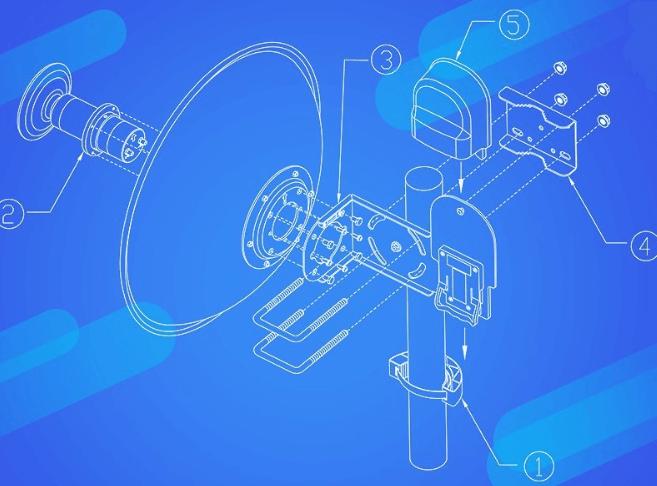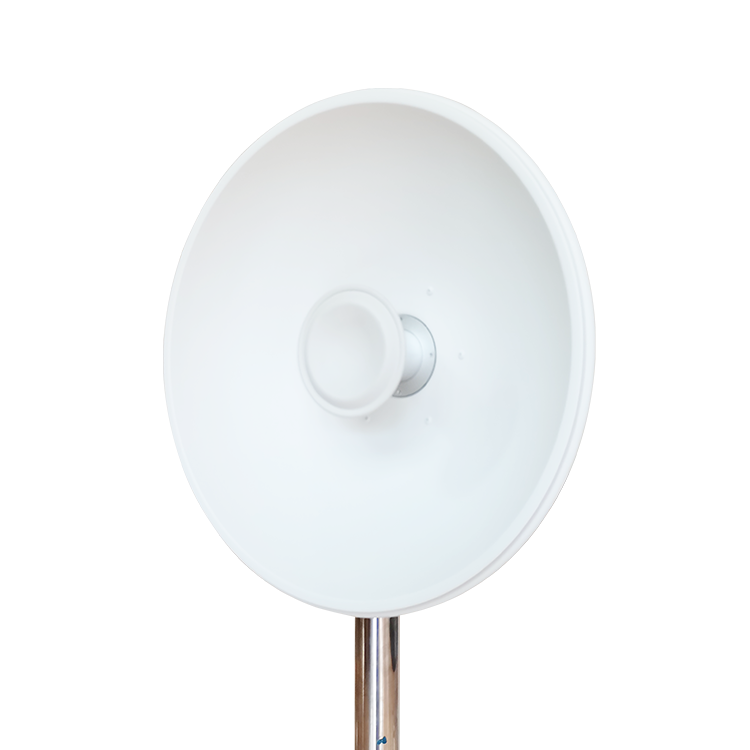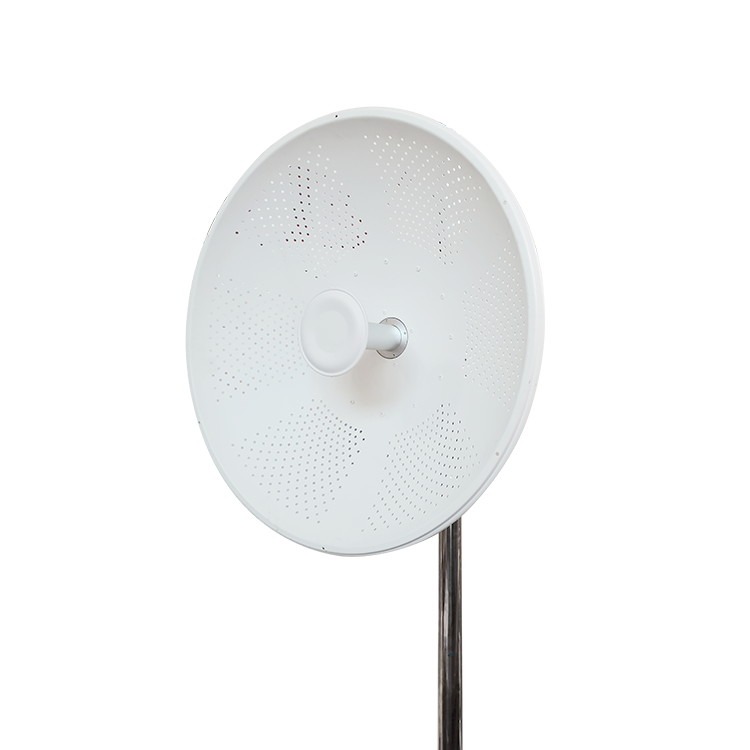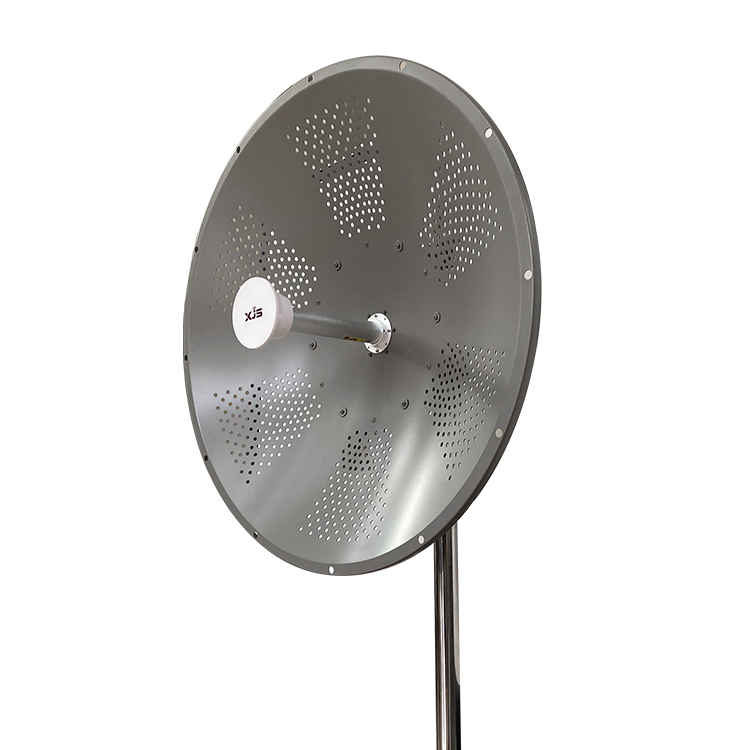The parabolic antenna, also known as the dish antenna, plays a vital role in the modern communication industry. With its parabolic shape, it is engineered to receive and transmit signals in a specific direction. And, the parabolic antenna is different from other antenna types. The author will guide you in exploring the parabolic antenna in this post.
What is the Structure of Parabolic Antenna?
The author would first give a brief introduction to the structure of the parabolic antenna, because the structure of the parabolic antenna directly affects the advantages and disadvantages of the internet dish antenna.
●Parabolic Reflector
The most prominent part is the dish-shaped reflector, which is usually made of metal or other conductive materials. Its surface is curved in a parabolic shape, resembling a section of a parabola. This curved surface is essential as it reflects and concentrates incoming or outgoing radio waves towards or from a focal point.
●Feed
The feed, located on the focal point of the reflector, is used for receiving the concentrated radio waves and sending them to the receiver. Or, it transmits the signal toward the reflector for dispersion.
●Driven Element
The driven element is also located on the focus of the parabola. It is the actual antenna in the structure, so it is responsible of transmitting and receiving information.
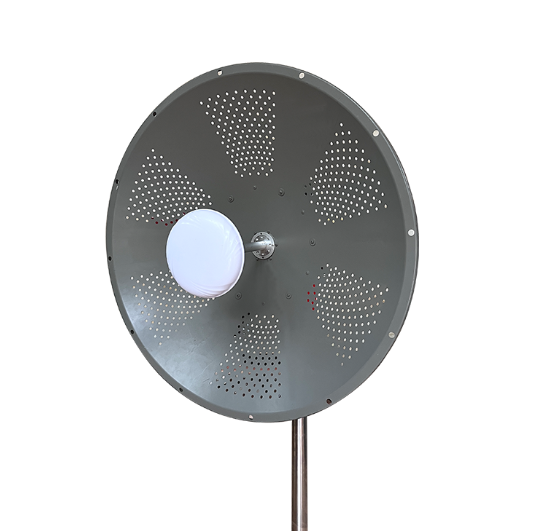
Parabolic Antennas Made In China
What are the Pros of Parabolic Antenna?
Due to its distinctive curved shape, the parabolic antenna has a series of pros that render it invaluable across various communication and signal reception applications.
●High Gain
One of their primary advantages lies in their remarkable ability to achieve high gain. By concentrating incoming or outgoing signals within a narrow beam, they amplify the signal strength significantly. This heightened gain facilitates improved signal reception and transmission, particularly useful for long-distance communication where maintaining signal integrity is crucial.
●Directional Focus
Moreover, the directional focus of parabolic antennas sets them apart. Their design allows for precise aiming, enabling them to lock onto specific sources of signals, be it from satellites or other transmission points. This characteristic minimizes interference, enhances signal quality, and optimizes communication efficiency.

●Versatility
The versatility of parabolic antennas is another standout feature. Their adaptability spans various applications, from satellite communication to radar systems and wireless networks. This versatility arises from their capability to function across a wide range of frequencies, making them indispensable in diverse technological setups.
●Weather Resistance
Weather resilience is another notable advantage. Despite adverse conditions like rain, snow, or wind, parabolic antennas maintain consistent performance due to their design and materials, ensuring uninterrupted signal reception and transmission.
●Frequency Efficiency
Their long-range capabilities are pivotal in enabling communication over vast distances. By harnessing their high gain and precise directional focus, parabolic antennas facilitate reliable transmission and reception, crucial for scenarios requiring extensive coverage.
What are the Cons of Parabolic Antenna?
Although the wifi dish antenna can benefit many communication projects, the wifi dish antenna still has some limitations in the applications.
●Radiation Blockage
The feed antenna and the supporting structures used in a parabolic antenna setup can obstruct a small portion of the radiation emitted by the main parabolic reflector.
This blockage results in a loss of efficiency, typically around 1 to 2%. This reduction in the effective radiation can impact the overall performance of the antenna system, especially in situations where maximum signal strength is crucial.
●Complex Design
The construction and design of a parabolic reflector antenna involve precision engineering. Achieving the desired performance requires careful calculations and considerations of various factors like the shape and dimensions of the reflector, the position of the feed, and the required focal length. This complexity increases the challenges in manufacturing, assembling, and maintaining these antennas.
●Side Lobes Formation
Despite efforts to ensure uniform illumination and direct the feed's power solely toward the desired direction, some portion of the electromagnetic energy spills over the edges of the parabolic reflector.
This spillage leads to the creation of additional radiation lobes called "side lobes" in the antenna's radiation pattern. These side lobes can cause interference and reduce the antenna's overall efficiency by directing energy in unintended directions.
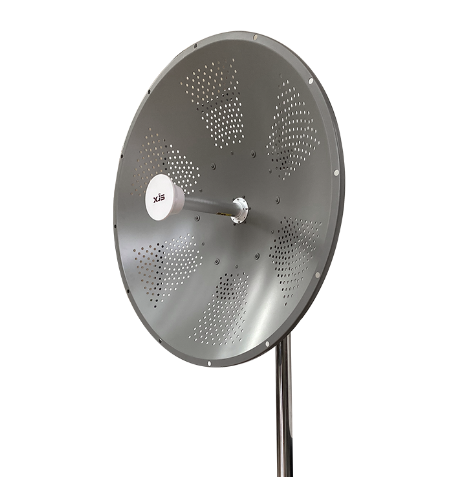
●Surface Distortions
Large parabolic dishes, especially those with continuous solid surfaces, may suffer from surface distortions due to environmental factors like wind, temperature changes, or physical deformation. These distortions can affect the antenna's ability to focus incoming signals accurately.
To mitigate this issue, some larger antennas use mesh surfaces, which are more resistant to distortion caused by environmental conditions.
●Precise Alignment
The optimal performance of a parabolic antenna is highly dependent on the accurate alignment of the feed at the focal point of the reflector. Achieving and maintaining this precise alignment can be challenging, especially in environments where external factors such as vibrations, thermal expansion, or structural changes can affect the positioning of the components. Any misalignment can significantly degrade the antenna's performance.
Conclusion
All in all, with its special design and excellent features, the parabolic antenna plays a crucial role in the modern communication system. Although it has a multitude of benefits, it still has some drawbacks in the actual applications. The author hopes the dish antenna can get more development in the future.
XJS is a global manufacturer and supplier of the wifi dish antenna, providing advanced parabolic antenna systems. Contact us to order the best antenna.
